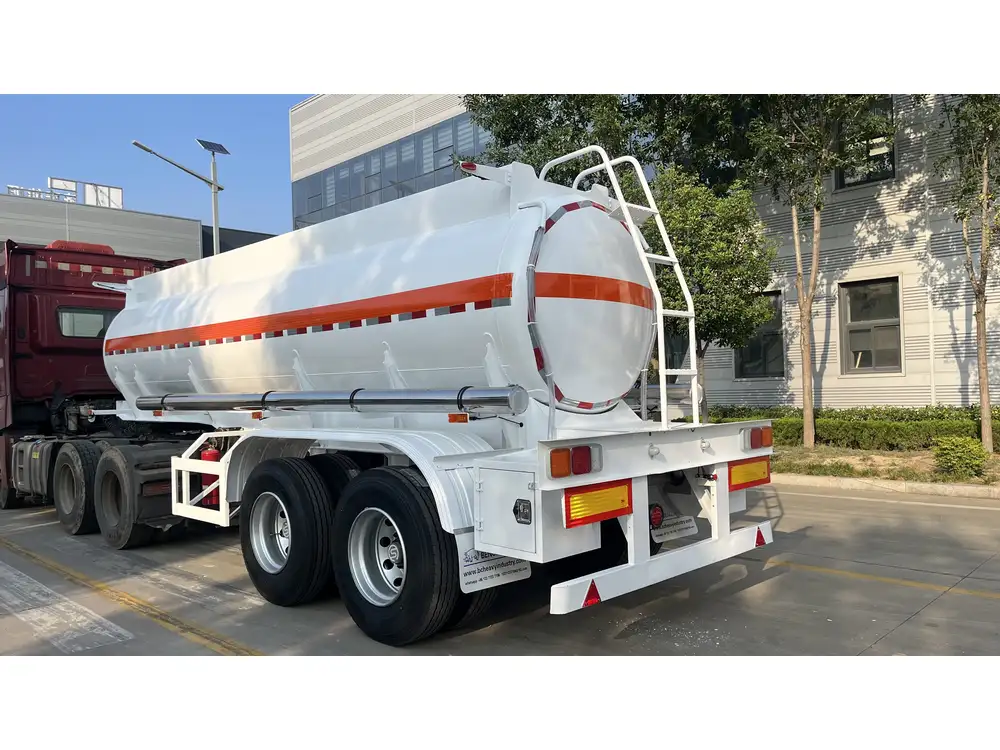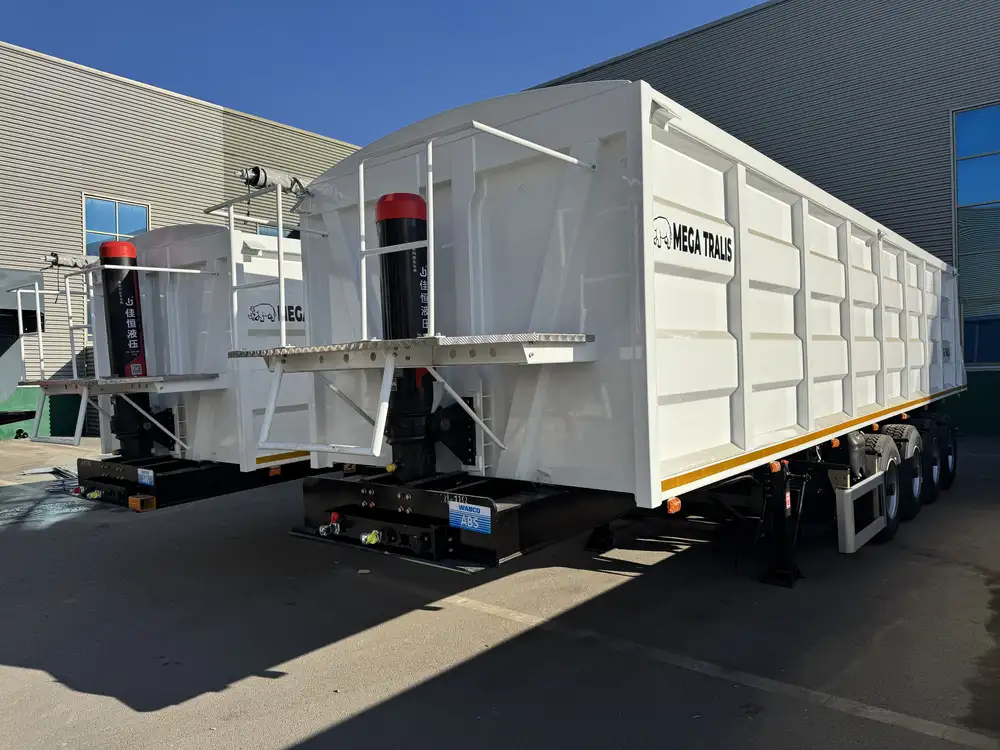Transportation of storage semi-trailers is a subject that often leads to many questions and uncertainties. Understanding how these movements work is crucial for manufacturers, transport companies, and end-users alike. In this guide, we will explore the nuances of moving storage semi-trailers, the considerations involved, and the best practices that ensure a seamless transport experience.
Understanding Storage Semi-Trailers
Before delving into the specifics of transporting a storage semi-trailer, it is vital to comprehend what it entails. Storage semi-trailers are high-capacity freight carriers designed to hold goods for extended periods. Typically utilized in warehousing and shipping applications, these trailers come in various forms and sizes, making it essential to consider their specifications when planning to move them.
Features of Storage Semi-Trailers
| Feature | Description |
|---|---|
| Construction | Made from durable materials such as steel and aluminum to withstand heavy loading. |
| Size | Available in lengths ranging from 28 to 53 feet; determines the type of transport required. |
| Loading Capacity | Can hold anywhere between 10,000 to 30,000 pounds depending on the trailer specification. |
| Mobility | Equipped with wheels for easy movement, though some may require special vehicles for transport. |

The Importance of Transporting Storage Semi-Trailers Properly
Transporting storage semi-trailers involves meticulous planning. These structures are not only large but also carry significant weight, demanding a strategic approach to their movement. The improper transport of storage trailers can lead to various issues, including damage to the trailer, cargo loss, and even safety hazards on the road.
Common Challenges in Moving Storage Semi-Trailers
Weight Restrictions: Regulations vary by region regarding the maximum weight that can be transported. Not adhering to these can lead to fines and delayed shipments.
Size Limitations: Road regulations also impose height and width restrictions which can complicate transportation, especially in densely populated areas.
Poor Loading Practices: Incorrectly loading trailers can lead to an imbalance, increasing the risk of accidents during transit.
Weather Conditions: Environmental factors can affect the safe transportation of semi-trailers, particularly in locations prone to severe weather.
Can UPU Move a Storage Semi-Trailer?
The question arises: can UPU facilitate the movement of a storage semi-trailer? The answer is multifaceted and depends on several factors.

Services Offered by UPU
The Universal Postal Union (UPU), while primarily focused on postal services, does often work in concert with logistics solutions that can handle transportation needs. If your query pertains to the capabilities of UPU or similar organizations to manage this task, the following services might come into play:
Coordination with Logistics Partners: UPU may not directly move storage semi-trailers but can facilitate connections with logistics providers who specialize in heavy and oversized freight.
Customs & Compliance: For international moves, UPU’s expertise in customs may simplify the process, ensuring that all regulations are adhered to during transport.
Storage Solutions: UPU can help streamline the process by offering temporary storage solutions if your move requires an interim period.
Factors to Consider When Assessing Movement Options
When navigating the complexities of moving a storage semi-trailer, several key factors come into play:
| Factor | Description |
|---|---|
| Distance | Calculate the distance between origin and destination; longer distances may require specialized services. |
| Type of Trailer | Each trailer may have different needs concerning equipment and handling methods. |
| Transport Regulations | Ensure compliance with local, state, and federal laws governing vehicle transport. |
| Insurance Coverage | Verify that the insurance adequately covers potential damages during transit. |
Wellness of Semi-Trailers
Before any transportation of storage semi-trailers occurs, robust maintenance checks are crucial. Semi-trailers should be inspected for:
Structural Integrity: Look for any signs of wear or damage that could impair function during transit.
Brake and Wheel Test: Ensure that brakes are fully operational and wheels are in good condition.
Hitch Mechanism: The coupling system should be firmly attached and functioning appropriately to handle the weight of the trailer.

Best Practices for Moving Storage Semi-Trailers
Navigating the movement of storage semi-trailers can be daunting, but adopting best practices can streamline the process significantly.
Pre-Movement Checklist
- Assessment of Load Weight and Size: Calculate the total weight and dimensions of the trailer.
- Permits and Documentation: Obtain necessary transport permits and ensure documentation is in order.
- Route Planning: Identify the route, taking note of any road restrictions, detours, or areas of low clearance.
- Vehicle Selection: Choose a towing vehicle capable of handling the load effectively.
During Transit
- Monitoring Environmental Conditions: Keep track of weather forecasts to prevent complications during movement.
- Regular Stops for Inspection: Plan for breaks to check the trailer’s condition and adjust if needed.
- Ensure Safe Driving Practices: Speed regulation and careful maneuvering are vital when transporting heavy equipment.

Post-Movement Actions
- Inspect for Damage: Once the trailer has arrived at its destination, conduct a thorough inspection for any potential damage incurred during transport.
- Load Unloading Procedures: Follow safe unloading procedures to prevent injury and ensure that the trailer remains stable throughout the process.
Professional Assistance: The Advantages of Hiring Experts
For businesses looking to move storage semi-trailers, employing professional transport services can remove the burden of the logistics involved.
Experience and Expertise: Transport firms specializing in semi-trailer movement are versed in the unique challenges associated with these transfers.
Access to Necessary Equipment: Professionals are equipped with the proper vehicles and tools to handle heavy-load transport.
Cost-Efficiency: While hiring experts incurs an upfront cost, the potential savings from avoiding fines, damage reimbursement, and time delays often outweigh these expenses.
Conclusion
Understanding the logistics involved in moving storage semi-trailers is crucial for businesses engaged in freight and logistics operations. Whether dealing with the complexities of regulations, capacity planning, or selecting the right partners like UPU, having a comprehensive strategy in place ensures seamless transport. Utilizing professional services can not only ease the burden of this task but also enhance efficiency, providing peace of mind in what could otherwise be a daunting process. By adhering to best practices and leveraging expert assistance when required, businesses can confidently navigate the transportation of storage semi-trailers, ensuring their valuable cargo arrives safely and on time.



